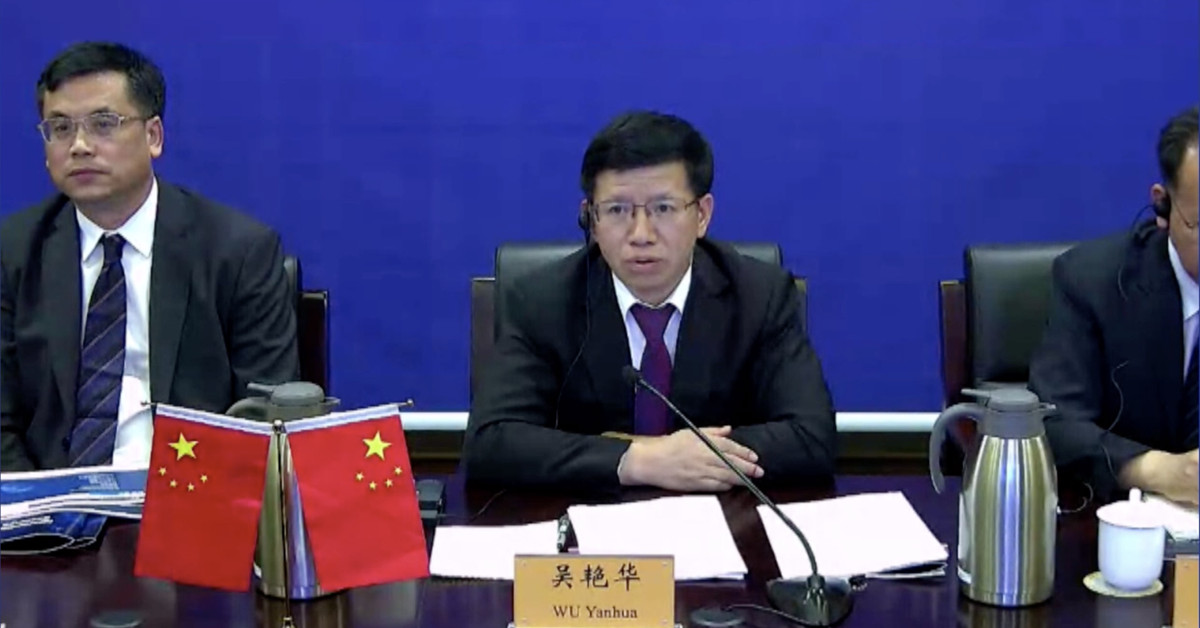China, Russia aim for first joint astronaut Moon landings in next decade
Source: The Verge added 16th Jun 2021China and Russia expect to put their first crews of astronauts on the Moon sometime in the next decade, representatives said on Wednesday. Already established plans for their International Lunar Research Station (ILRS) include a lineup of robotic lunar missions and coming up with a legal framework for exploring the Moon, an effort similar to the NASA-led Artemis lunar program.
Officials from the China National Space Administration (CNSA) and Roscosmos, Russia’s space agency, gave a joint presentation during the Global Space Exploration Conference in Russia on their three-phase plan to build a network of Moon bases and satellites in lunar orbit. The space agencies formally teamed up on the project in March.
The first and most of the second phase of the lunar project “is just preparatory work” involving uncrewed missions, Wu Yanhua, CNSA’s deputy director, said through a translator. “We are still focusing on unmanned lunar exploration in the next ten years,” he said, responding to an audience question on when the first Russian or Chinese astronauts will be on the Moon.
CNSA is currently focused on sending astronauts to its new low-Earth-orbiting space station, whose first module launched in April. The station’s first crew of three astronauts is expected to launch from China sometime this month for a three-month stay.
Russia and China’s plans for a Moon presence set up a race between the countries and the US. Their ILRS is taking shape in parallel to NASA’s Artemis program, a multibillion-dollar effort to put US astronauts on the Moon as soon as 2024 and establish a long-term presence on the surface in the following decade. NASA is working with Japan, Canada, and the European Space Agency on a Lunar Gateway. The Gateway is a planned outpost orbiting the Moon designed to relay crews of astronauts to future base stations on the lunar surface. Russia, NASA’s biggest partner on the International Space Station, had been in talks with the US to participate in the Gateway program before turning to China’s ILRS plan instead.
China and Russia have said the ILRS is open to international partners, including NASA. The two countries are also working on a “dedicated legal framework” for exploring the Moon, Roscosmos deputy director-general Sergey Saveliev said at the conference. An initial version of the agreement should be ready by year’s end, Wu said.
That framework currently lags behind NASA’s Artemis Accords, a similar document that aims to set legal norms for the Moon operations under its Artemis program. US officials emphasize the Accords are an interpretation of the 1967 Outer Space Treaty that promotes peaceful coordination between countries on the Moon. NASA signed its eleventh partner, Brazil, onto the Artemis Accords on Tuesday, after courting other US allies like South Korea, Ukraine, Australia and the United Kingdom.
“We have already established a specialized legal team under the joint working group” for the China-Russia-led legal framework, Wu said during the conference panel. “We also welcome all the parties to participate in it and follow the legal framework.” Saveliev said Roscosmos is talking to the European Space Agency and the French space agency as prospective partners.
Видеоконцепция создания Международной научной лунной станции
После презентации ознакомиться с Дорожной картой и Руководством по участию в проекте #МНЛС можно будет на официальных сайтах Роскосмоса и КНКА pic.twitter.com/DycyqhhPFZ
— РОСКОСМОС (@roscosmos) June 16, 2021
The agenda for ILRS consists of three phases. The first phase, between 2021 and 2025, involves at least six robotic missions launching to the Moon, split evenly between China and Russia, that will scout future lunar landing locations and conduct scientific reconnaissance. The next phase, from 2026 to 2035, focuses heavily on construction, with “massive” cargo deliveries and the complete establishment of facilities in lunar orbit and on the Moon’s surface. The final phase begins in 2036, when routine operations begin. That includes “lunar research and exploration, technology verification, supporting human lunar landing[s] with the completed ILRS. Expanding and maintaining modules if needed,” a presentation slide said.
Despite a stretched-out timeline for crewed Moon landings, NASA administrator Bill Nelson has cast China’s growing space capabilities as “aggressive,” pointing to Beijing’s lunar plans and its debut Mars landing last month as a reason for the US to race ahead for a 2024 Moon landing. He’s urged lawmakers to keep an eye on the country’s growing partnership with Russia, a longtime NASA ally in space.
“We are prepared to work with the US in space,” Russian president Vladimir Putin said in a NBC news interview on Monday, ahead of his meeting with President Joe Biden. “I think recently the head of NASA said that he could not imagine development of space programs without its partnership with Russia. We welcome this statement.”
brands: AIM Com First It New Orbit other Shape Space Team United media: 'The Verge' keywords: NASA
Related posts
Notice: Undefined variable: all_related in /var/www/vhosts/rondea.com/httpdocs/wp-content/themes/rondea-2-0/single-article.php on line 88
Notice: Undefined variable: all_related in /var/www/vhosts/rondea.com/httpdocs/wp-content/themes/rondea-2-0/single-article.php on line 88
Related Products
Notice: Undefined variable: all_related in /var/www/vhosts/rondea.com/httpdocs/wp-content/themes/rondea-2-0/single-article.php on line 91
Warning: Invalid argument supplied for foreach() in /var/www/vhosts/rondea.com/httpdocs/wp-content/themes/rondea-2-0/single-article.php on line 91
